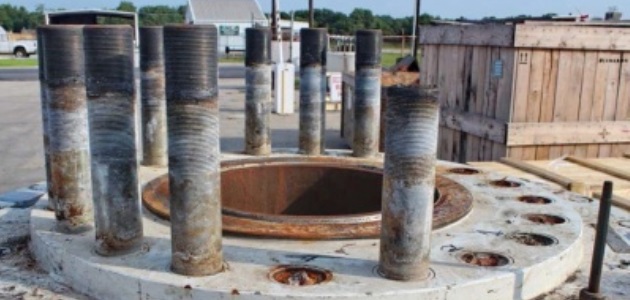
BSEE Forms Interagency Group on Subsea Bolt Failures
The agency's director says they present a major risk for offshore workers and the environment. Many provisions of BSEE's Well Control Rule are set to take effect July 28.
Bureau of Safety and Environmental Enforcement Director Brian Salerno announced the agency is creating an interagency group to focus on the issue of failing blind shear ram blade attachment bolts and the risk this poses to offshore operations. He called on federal partners to work on what BSEE regards as a critical safety issue as part of BSEE's Interagency Bolt Action Team.
"The failure of bolts in subsea oil and gas operations presents a major risk for offshore workers and the environment," Salerno said. "I have challenged offshore operators, drilling companies, manufacturers, and industry organizations to be more proactive in addressing this safety issue, and it makes sense to bring our federal counterparts into this important effort."
The team will try to identify root causes of the bolt/connector failures, review industry standards, and develop solutions for future safe use of bolts and connectors. "By engaging with subject matter experts and individuals with knowledge of materials science and metallurgical shearing and corrosion, the team will be the first cross-agency group to address the causes and solutions to the bolt problem."
BSEE already has been working with original equipment manufacturers, has issued a Safety Alert and a quality control study, and has called on the industry to develop better standards and practices and to be proactive in remedying defects seen in bolt failures. The agency there have been a number of failures of ram blowout preventers (BOP) where blind shear ram blade attachment bolts were found fractured, and the failures began more than a decade ago, around 2003.
Meanwhile, many provisions of the new Well Control Rule are set to take effect on July 28, and Salerno has reminded his senior staff to provide timely responses to questions the agency receives about it. "So far, we have answered almost fifty detailed questions that have come in since the final rule was published in April," he said. The Oil and Gas and Sulfur Operations in the Outer Continental Shelf-Blowout Preventer Systems and Well Control final rule was published April 29, and July 28 is the date when operators must be in compliance with most of the new regulations.
The rule enacts the recommendations of the Deepwater Horizon commission and formalizes industry best practices. "We think we've been very fair in terms of the timetable," he said, "allowing as much as seven years before implementation of the final phase." To assist operators, BSEE will host a well control rule workshop August 17 in the bureau's Houston office, which is located at 1919 Smith Street downtown.